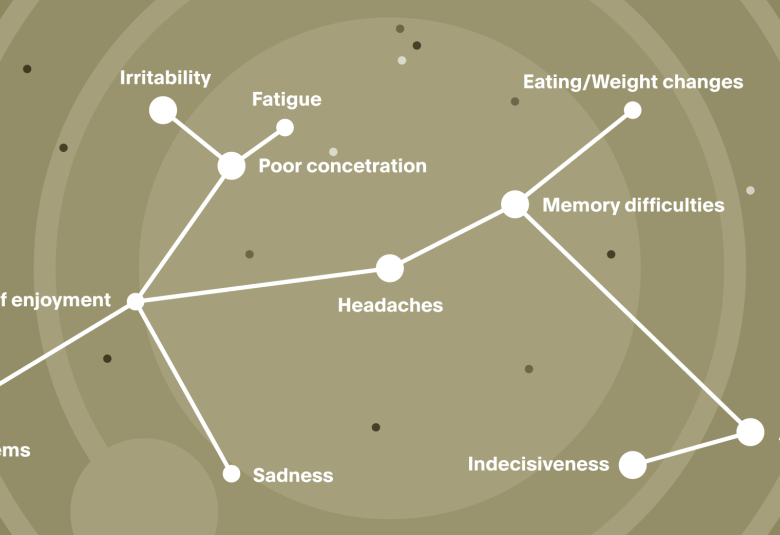Two posters presented during SIRS 2019 suggest that use of long-acting injectable (LAI) antipsychotic medications offer beneficial effects on social and personal functioning in patients with schizophrenia and; those higher compliance levels directly correlate with lower hospitalization risk.
Compliance and LAI
Pappa and Mason evaluated the relationship between compliance level with antipsychotic treatment with long acting injectable formulation and risk of discontinuation and hospitalization in psychotic patients including those with schizophrenia.
The study was a naturalistic image study of using an LAI in routine clinical practice. Patients’ notes were examined to extract information from a period 3-year pre- and 3-year post- initiation of LAI about antipsychotic treatment prior to initiation of LAI, reason for initiation, primary diagnosis, co-existence of substance abuse (if any), compliance issues, LAI cessation and hospitalizations. Compliance was graded as full (no missed dose/year), good (>6 injections/year) and poor (<6 injections/year).
There was a direct association between level of compliance and risk of hospitalization: the lower the compliance the greater the risk of hospitalization.
A total of 173 patients were included in the study. Their average age was 46 years, 64% were male, 61% started LAI as outpatients, and they were of mixed ethnicities. The primary diagnosis in this group was schizophrenia (70%), schizoaffective disorder (11%), and other (19%). Discontinuation rates in schizophrenia patients at years 1, 2 and 3 post-initiation of LAI were 20%, 13.5% and 18%, respectively. Poor tolerability was the main reason for discontinuation (17.3%), followed by poor compliance (12.2%), ineffectiveness (11.5%) and other or unknown reasons (4%).
71% of total patients were fully compliant with LAI
Of the total 173 patients, 122 (71%) were classed as fully compliant, 21 (12%) showed good compliance and 13 (7%) were poorly compliant. Discontinuation rates at 3 years was 37%, 33% and 7% in those patients who were fully, good or poorly compliant, respectively.
Of the 95 patients, who were followed over 3 years and who remained on LAI, compliance rates were 81%, 13% and 6% in fully, good and poorly compliant patients, respectively.
Of the 95 patients, who were followed over 3 years and who remained on LAI, compliance rates were 81%, 13% and 6% in fully, good and poorly compliant patients, respectively. In this group, the mean number of hospital admissions and the mean number of bed days decreased significantly (1.44 to 0.59 and 93 to 29, respectively) from 3 years pre- to 3 years post- LAI initiation.
Direct correlation between level of compliance and risk of hospitalization
In the study, reduction in number and length of hospital stays was statistically significantly reduced in only those patients who were fully compliant. There was a direct association between level of compliance and risk of hospitalization: the lower the compliance the greater the risk of hospitalization. Indeed, poorly compliant patients had the worst outcomes and were twice as likely to have completely discontinued LAI treatment at 3 years.
Poorly compliant patients had the worst outcomes and were twice as likely to have completely discontinued LAI treatment at 3 years.
Functioning and LAIs
Along with control of psychotic symptoms, improved functioning is an important treatment goal in schizophrenia, particularly from the patient perspective. The efficacy of a long-acting injectable antipsychotic (LAI) agent has been demonstrated.
In the acute episode, a randomized, placebo-controlled study (RCT) showed that the LAI significantly improved clinical symptoms and social functioning. In two further RCTs in which the LAI was used as maintenance treatment in stable patients with schizophrenia and in an open label extension study, stability in clinical symptoms and patient functioning were maintained with use of the LAI.
Post-hoc analysis
During SIRS 2019, the results from post-hoc analyses of the effect of the LAI on personal and social functioning were presented. The data demonstrated the efficacy of LAI in improving and maintaining personal and social functioning in patients with schizophrenia.
In one study, 340 patients were assessed. Of these, 168 were treated with the LAI and 172 with placebo. In the treatment group, 49 patients were aged ≤35 years and 119 > 35 years old; of those given placebo, 54 subjects were ≤35 years, and 118 were >35 years of age.
Functioning was assessed using the Personal and Social Performance (PSP) scale. Change from baseline in PSP total score was significantly greater with LAI than placebo at week 12 (Least squares mean {SE} 13.0 [1.2] vs 5.5 [1.2], respectively; P<0.001). When stratified by age, the treatment effects compared with placebo in younger patients were larger (11.1 [95% CI, 4.8 to 17.5]; P=0.001) than those in older patients (3.6 [95% CI, –0.6 to 7.9]; P=0.09).
When stratified by age, the treatment effects compared with placebo in younger patients were larger than those in older patients
In another, open-label extension study, 1,081 patients entered the maintenance phase and 858 completed the study. Mean (SD) PSP total score increased from 67.81 (11.79) at baseline to 68.62 (12.97) after 52 weeks. Thus, use of a LAI preserves functioning in patients with schizophrenia.
Of particular interest, functional improvement was greatest in patients aged ≤35 years on LAI and smallest in patients aged ≤35 years on placebo. This suggests that there is a greater sensitivity to improvements in social functioning in younger patients with schizophrenia treated with the LAI.
Use of a LAI preserves functioning in patients with schizophrenia
Our correspondent’s highlights from the symposium are meant as a fair representation of the scientific content presented. The views and opinions expressed on this page do not necessarily reflect those of Lundbeck.




